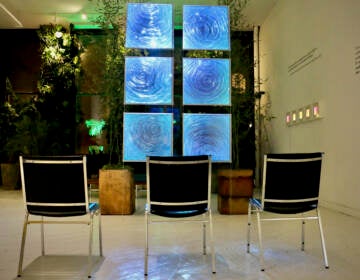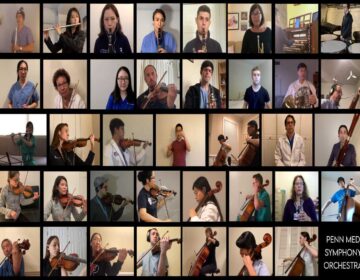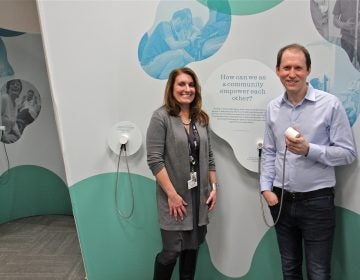From Philly and the Pa. suburbs to South Jersey and Delaware, what would you like WHYY News to cover? Let us know!
As the current artist-in-residence at the Penn Center for Neuroaesthetics, there’s one golden rule Judith Schaechter must follow: Don’t create a picture of a brain.
“But ultimately, every drawing anyone makes is a picture of their own brain somehow,” Schaechter argued and laughed.
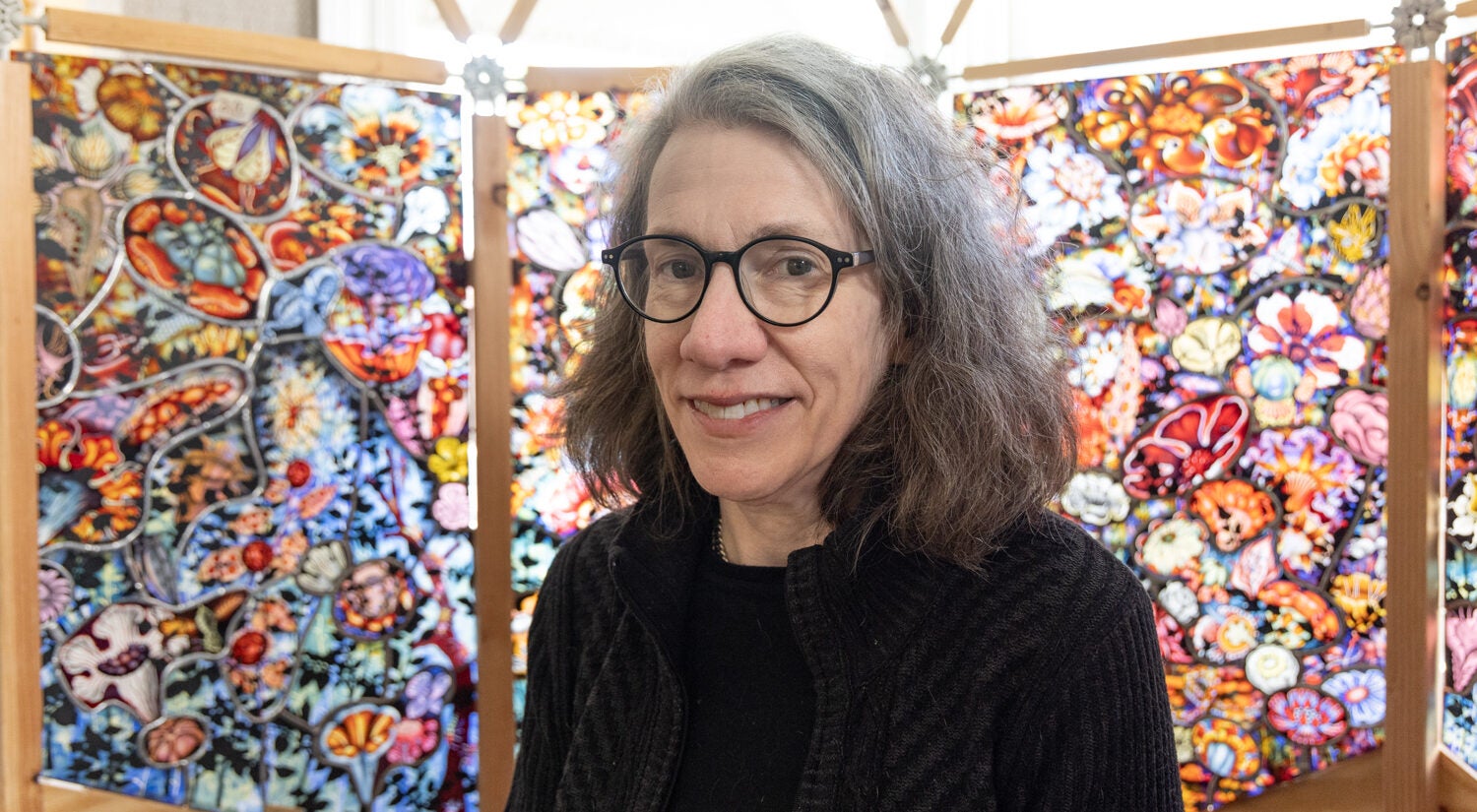
Nevertheless, the stained-glass artist from South Philadelphia has stayed away from featuring the human body’s most complex organ.
Instead, detailed sketches of flowers, insects and plants are tacked up on the walls of Schaechter’s home studio. Small bins labeled “BOTANICALS,” “CRITTERS” and “BODY PARTS” are filled with stencils and glass shards of scrapped designs.
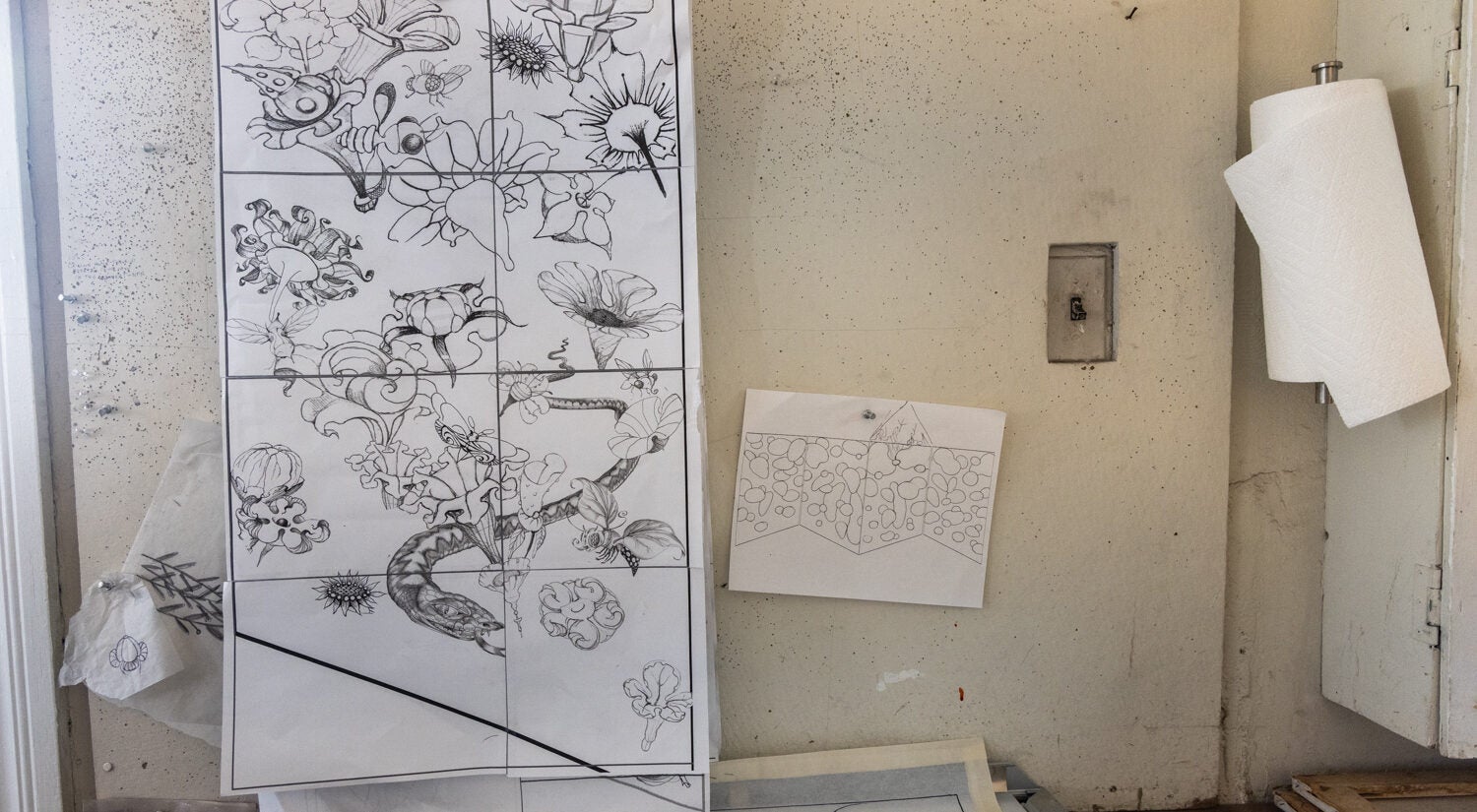
The Penn Center for Neuroaesthetics is a pioneering team of researchers and scientists who explore the neural and biological basis of aesthetic experiences. Questions they try to answer include: What is the relationship between beauty and morality? What effect does architecture have on cognition? And more broadly, how do people interact with art?
Since art is often at the heart of their research, the team added an artist-in-residence position about five years ago. Dr. Anjan Chatterjee, neurologist and center director, said people like Schaechter bring a unique and fresh perspective to their work.
“One of the challenges always is, you don’t know what you don’t know,” he said. “Having people like an art historian or an artist who … have a completely different disciplinary background and an angle into these questions is tremendously helpful and useful for us to expand our thinking.”
Finding the right person who could fill the position and fit in with the team is important, Chatterjee said.
“Someone who has a very clear sense of what they want to do is less interesting to me,” he said. “I don’t want someone who’s going to illustrate brains, that’s boring. I don’t want someone who is going to represent our data in a fancy way.”
Then Schaechter entered the picture in 2022.
Some of her work is reminiscent of medieval illustration, but lit up from the back. Several pieces take on a more gothic tone with darker colors and maudlin and melancholic faces. Others are a series of macabre scenes featuring children and animals, often offset by a brightness of flowers, birds and other organisms.
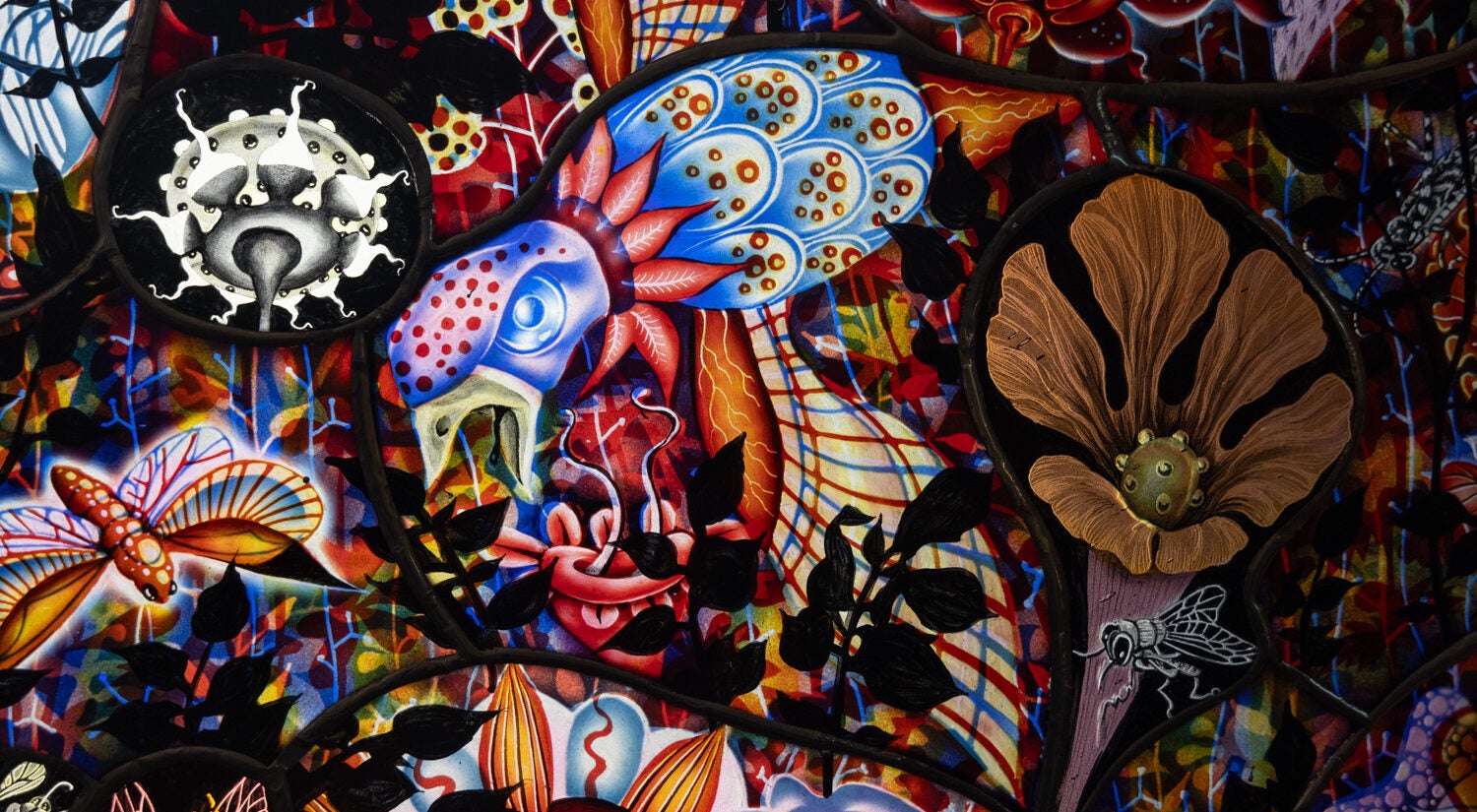
Schaechter, 63, was already a fan of Chatterjee and his work when she discovered the artist-in-residence position two years ago and became determined to get it. The role brings together her creative talents and her curiosities about the mind and nature, which she got from her parents.
“My mother was just really interested in reading books about the brain,” she said. “When I was growing up, we had books about the brain on every coffee table, and I was reading them, too.”
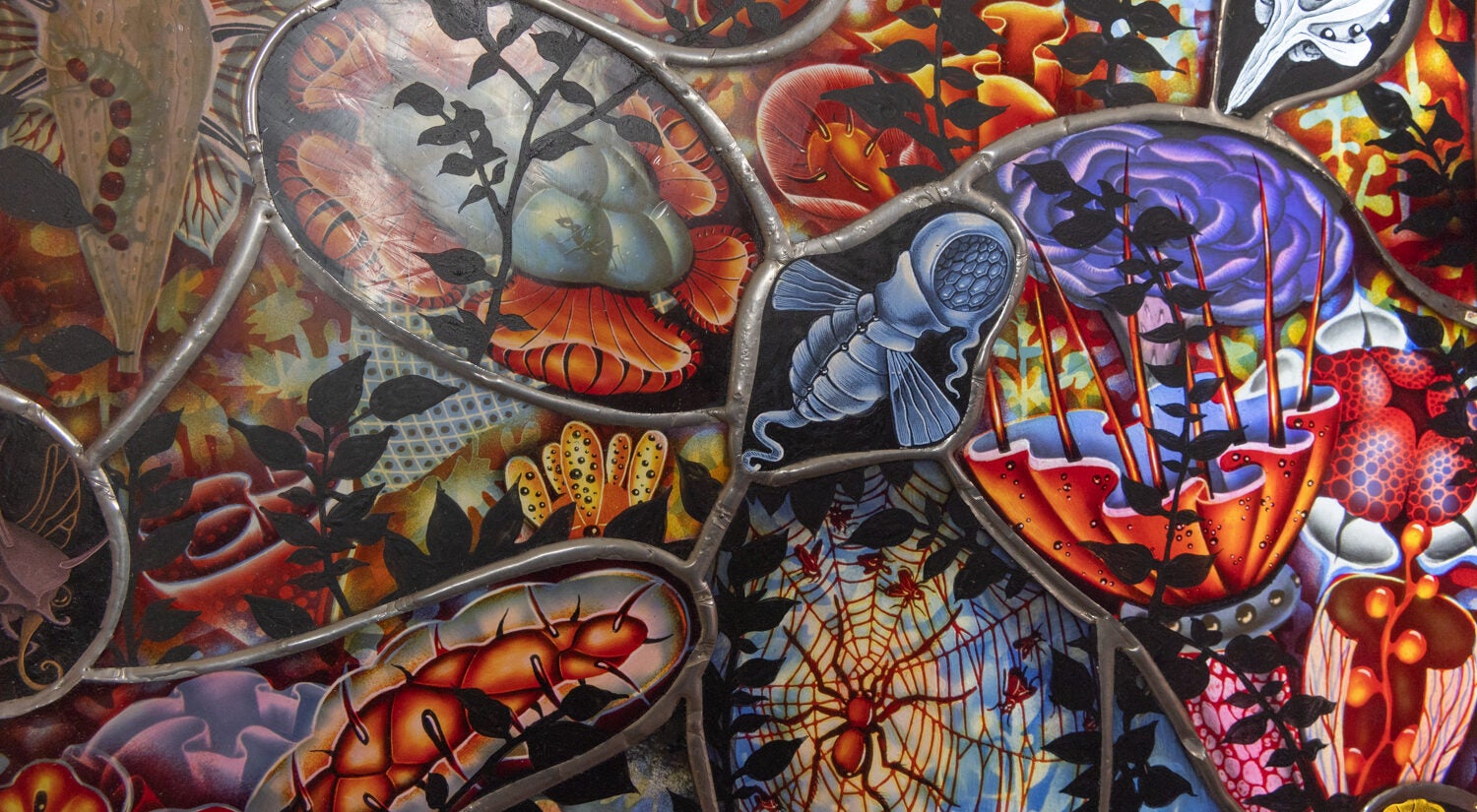
Schaechter’s father is a retired microbiologist who collected 17th and 18th century books and manuscripts on mushrooms, his passion.
“So, he was collecting all these manuscripts with hand-painted mushroom prints, and I thought as artwork, they were gorgeous,” she said. “That’s what got me interested in natural history prints, and that got me thinking about the relationship of art to science.”
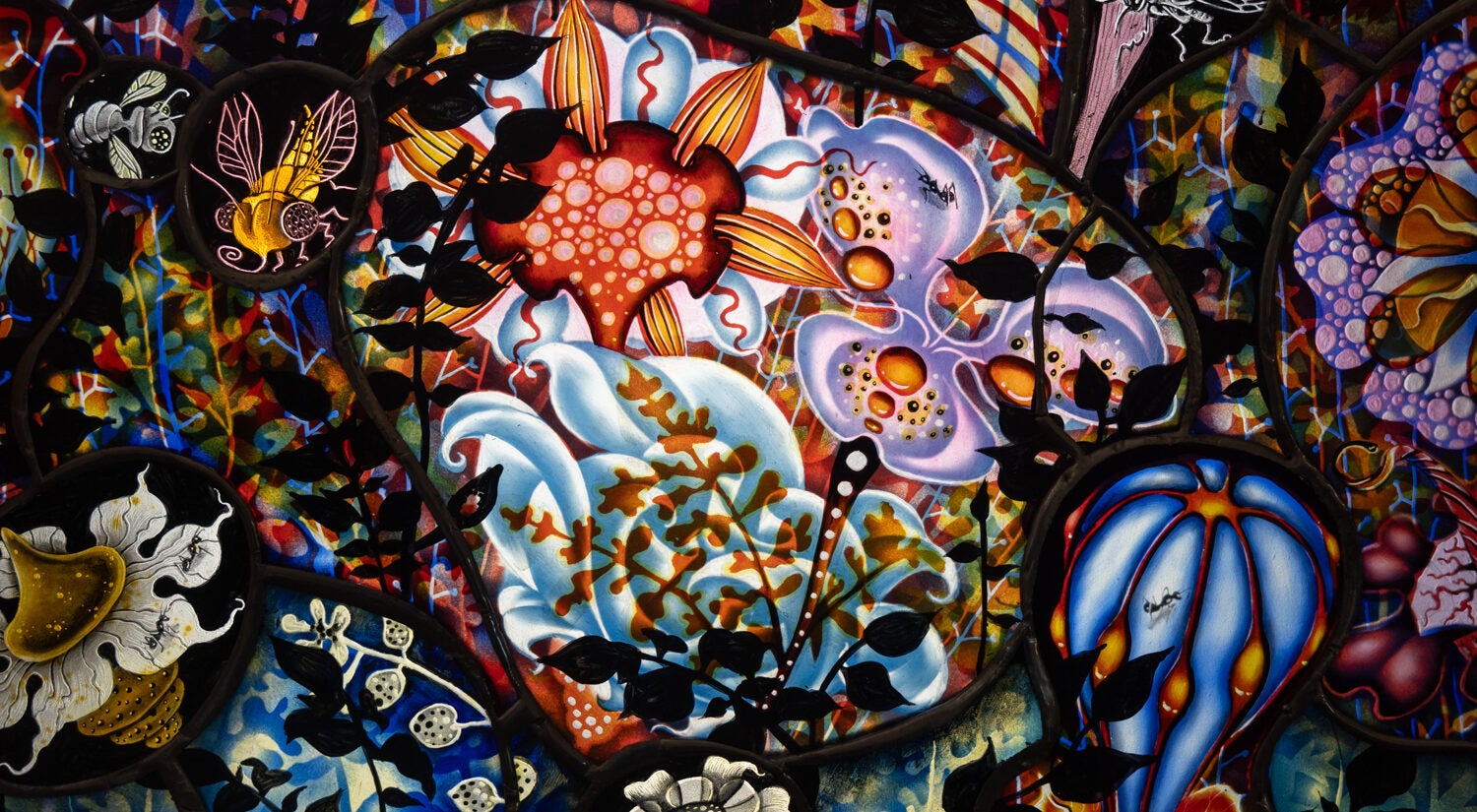
Schaechter joins the neuroaesthetics team for weekly lab meetings on the University of Pennsylvania’s campus. Researchers go around the table and share their progress on various projects, which include studies on prejudices and facial anomalies, the impact of nature art in health care settings and more.
Schaechter is really engaged, up to a point.
“It’s fascinating up until the moment they start discussing which statistical dataset they’re going to crunch and analyze their stuff,” she said. “At that point, I go to my happy place. Every time they do that, it’s like, this is why I didn’t go into science.”
While she listens, Schaechter doodles flowers and insects, realistic ones and some from pure imagination.
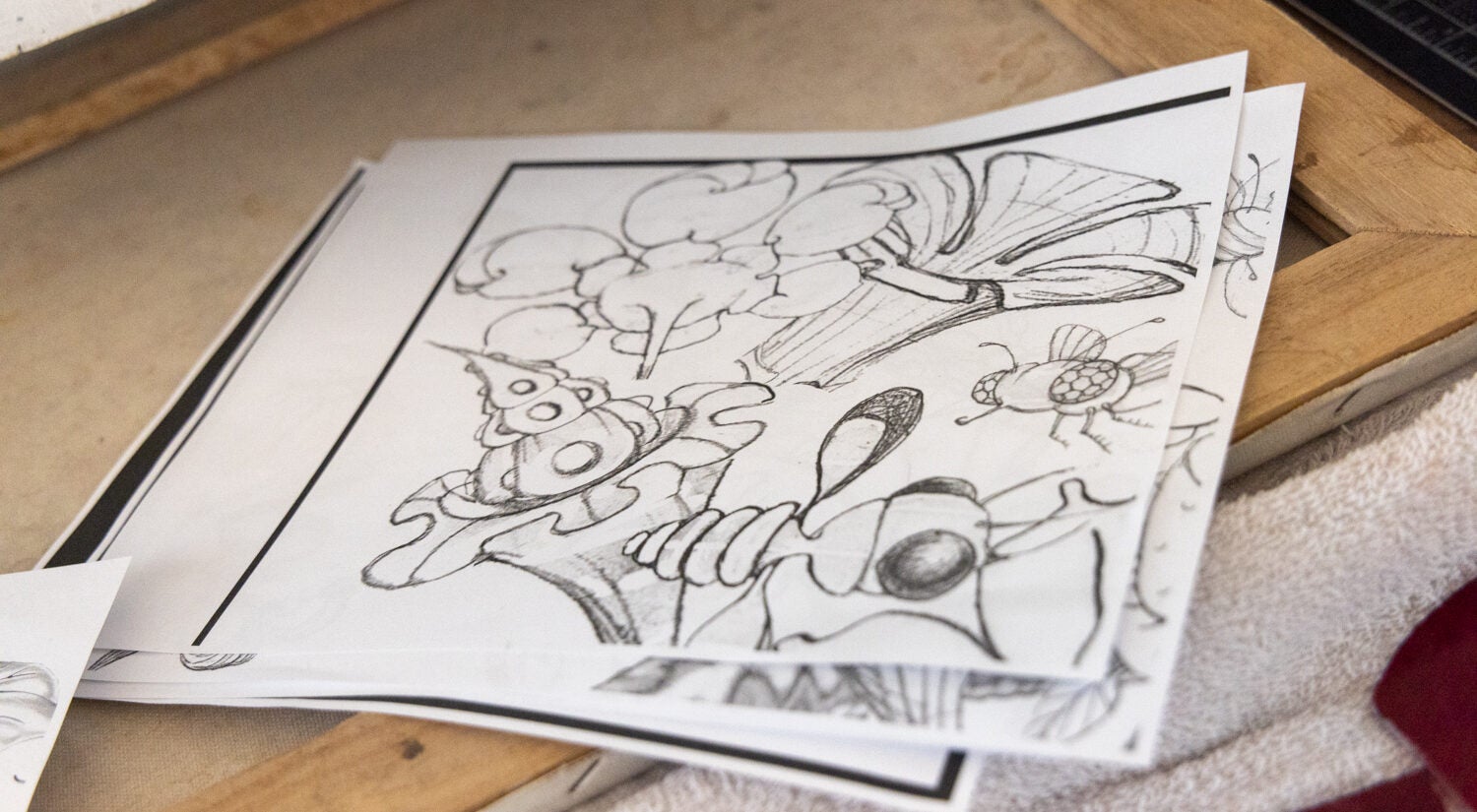
These little creations often wind up in her residency project, which is a stained-glass dome that speaks to the topic of biophilia: the deep connection between humans and nature, where humans seek out nature to feel whole.
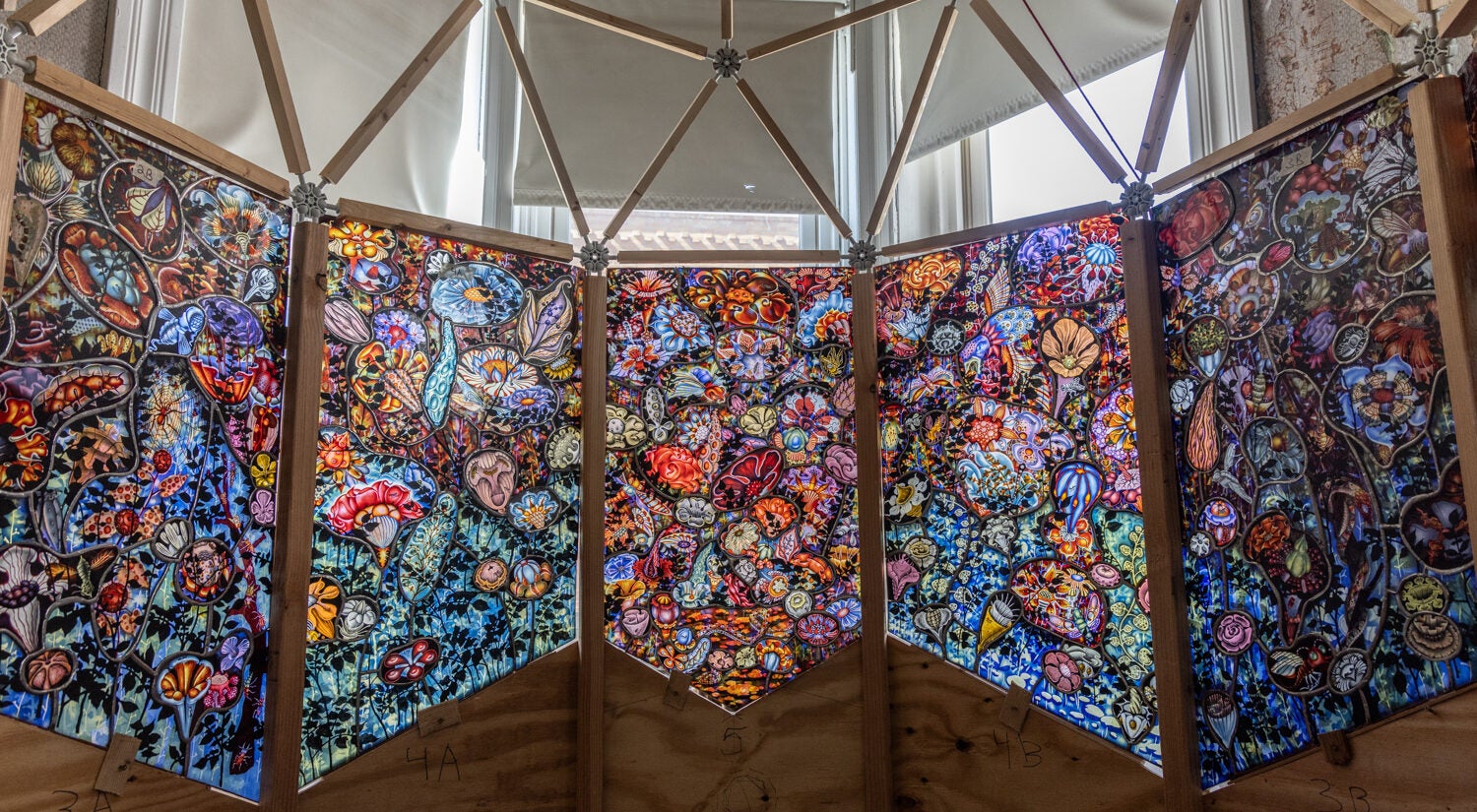
Schaechter works on rectangle- and triangle-shaped glass panels at her home studio, an open space on the second floor of her home. Two large light tables take up both sides of the room — “my desk,” she said.
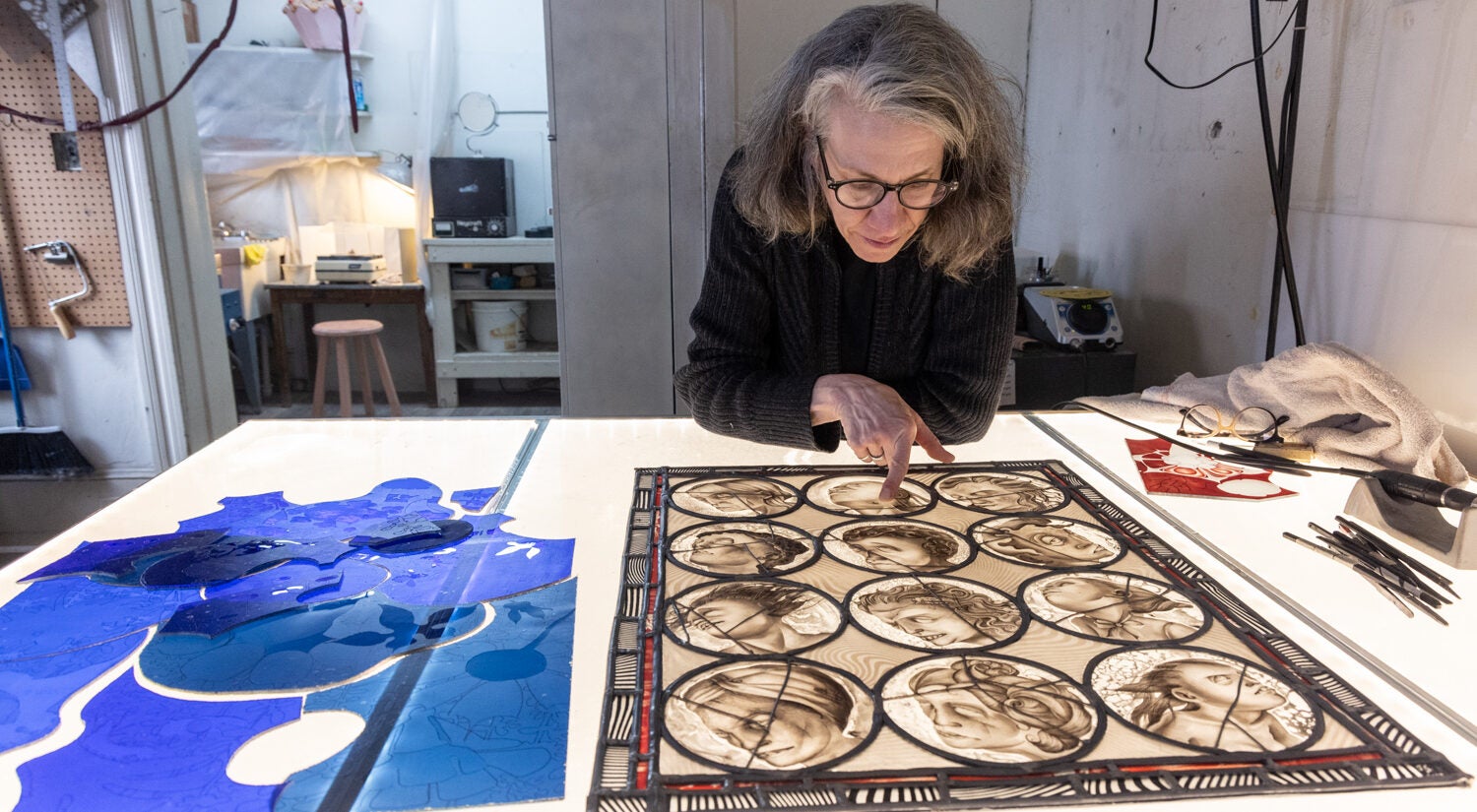
In her art pieces, Schaechter uses a specific type of handmade glass called flash glass. It’s when a glassblower makes a bubble on the end of the pipe in a clear or light color.
“Then on top of that, he dips it into a tank of molten glass that is a bright color like red, for example,” she said. “And eventually, this turns into a sheet of glass that has a very thin layer of red on a normal layer of clear.”
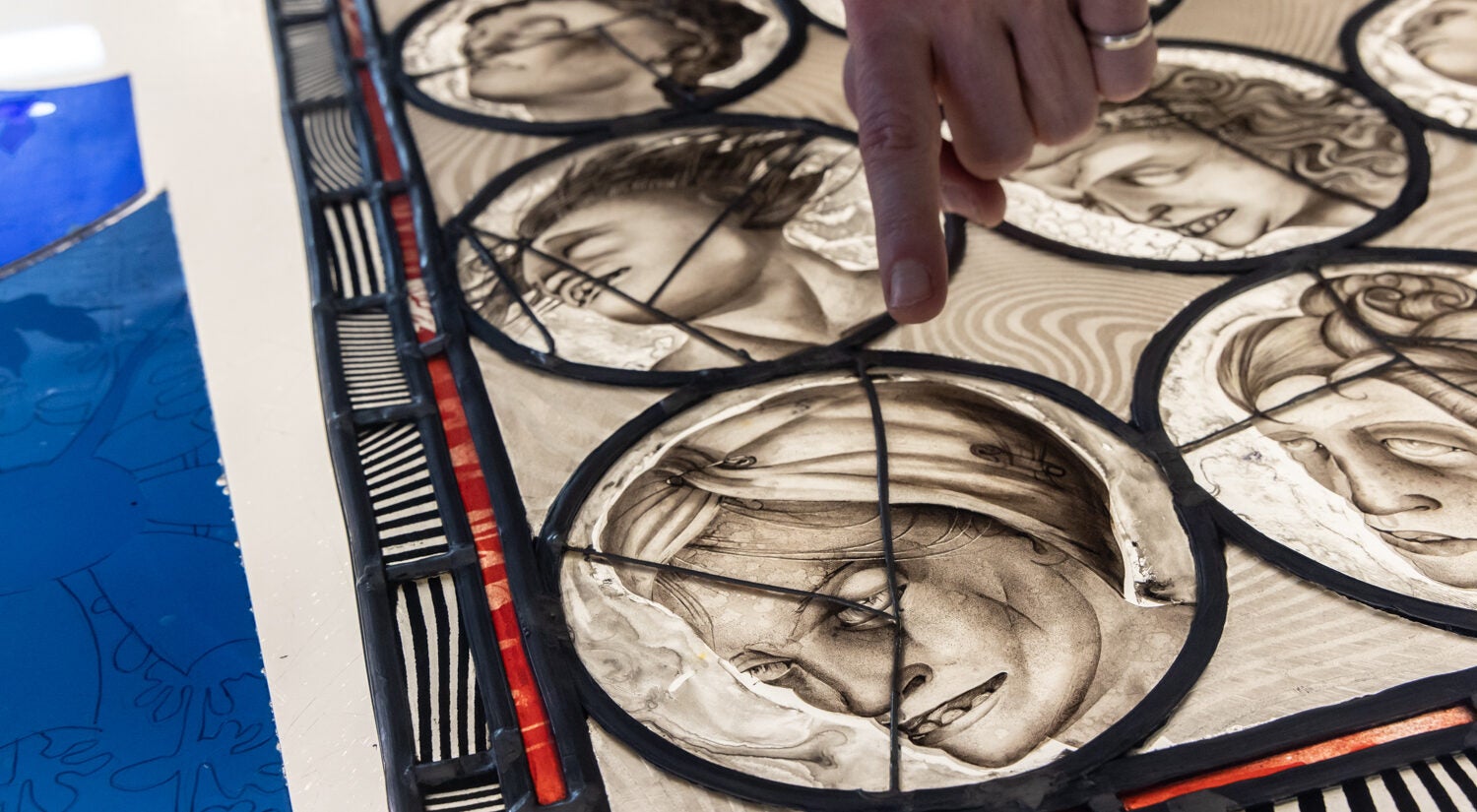
Schaechter then engraves into those layers to create images. She does it by using specific diamond-encrusted tools, “basically dentist drills.”
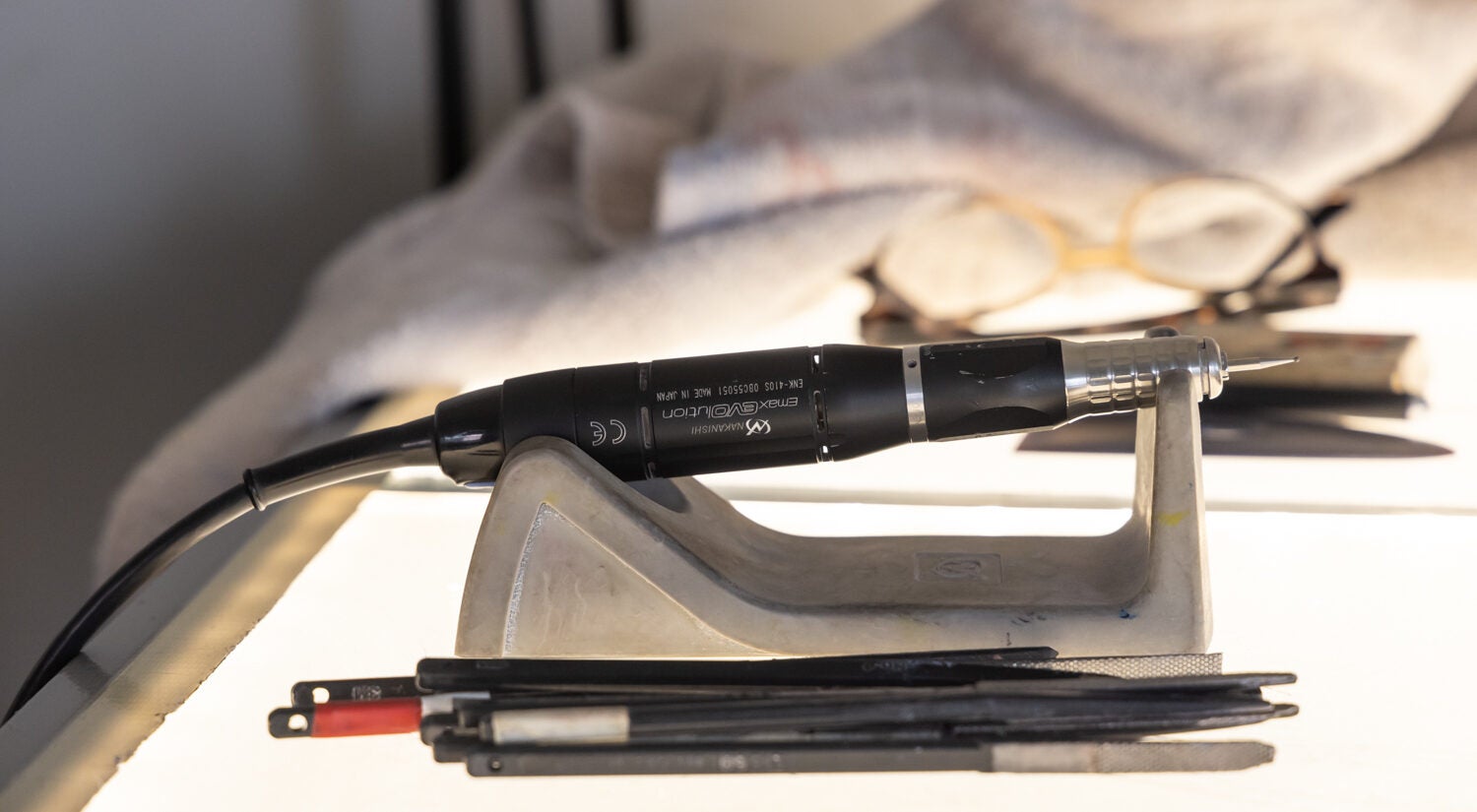
She demonstrated on a small piece of red flash glass placed on the light table. Schaechter threw on protective eyewear and gripped an electric pen tool in her left hand.
“So, diamond tools have to have water to cool them down,” she said as she reached for a small bottle of water. The electric hand tool whizzed to life — sounding exactly like a dentist drill — and she began to engrave lines into the top red layer of the glass to reveal the clear underneath.
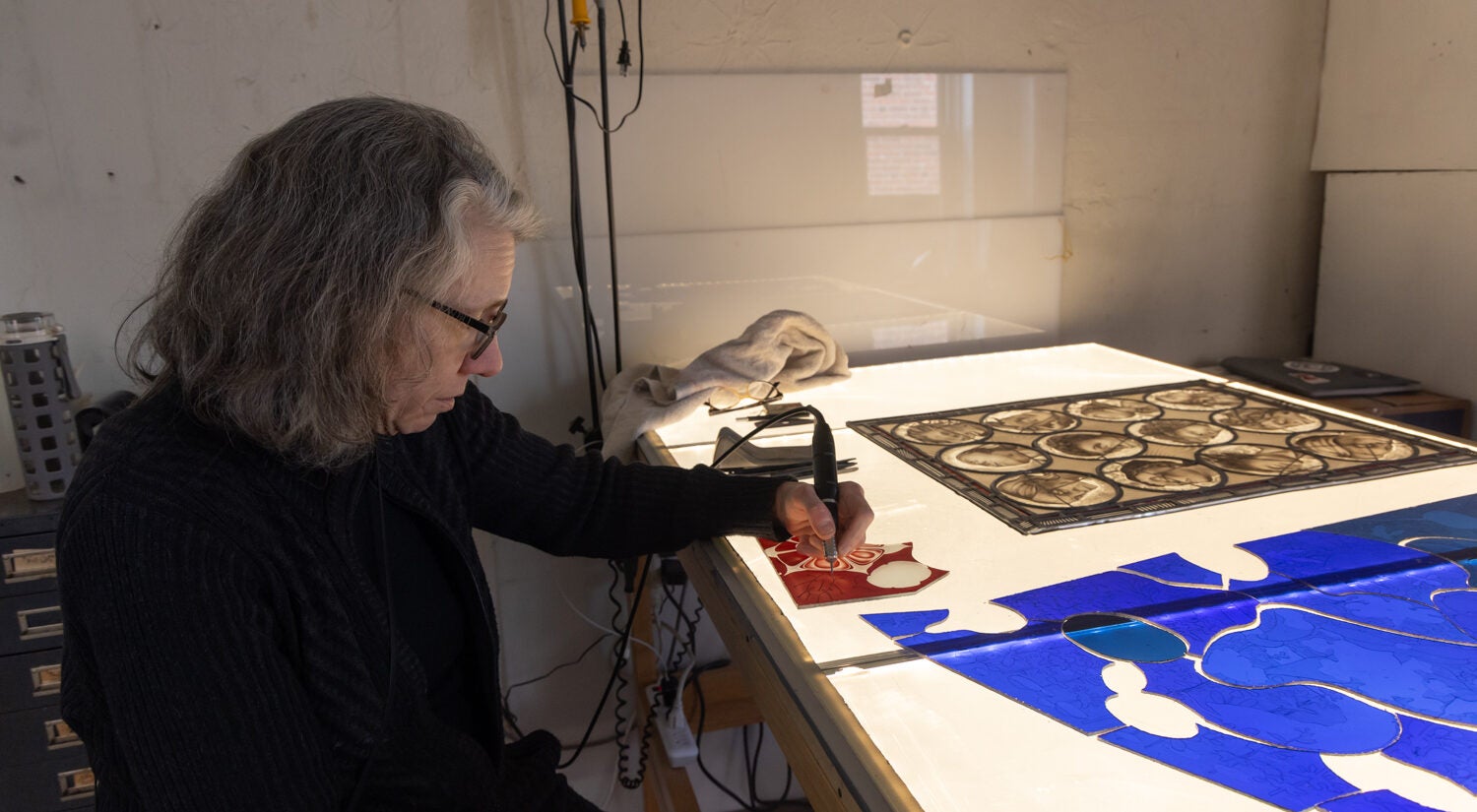
Schaechter creates gradients of color with a filing tool she uses to scratch into the glass. “It’s very tedious, takes a long time.”
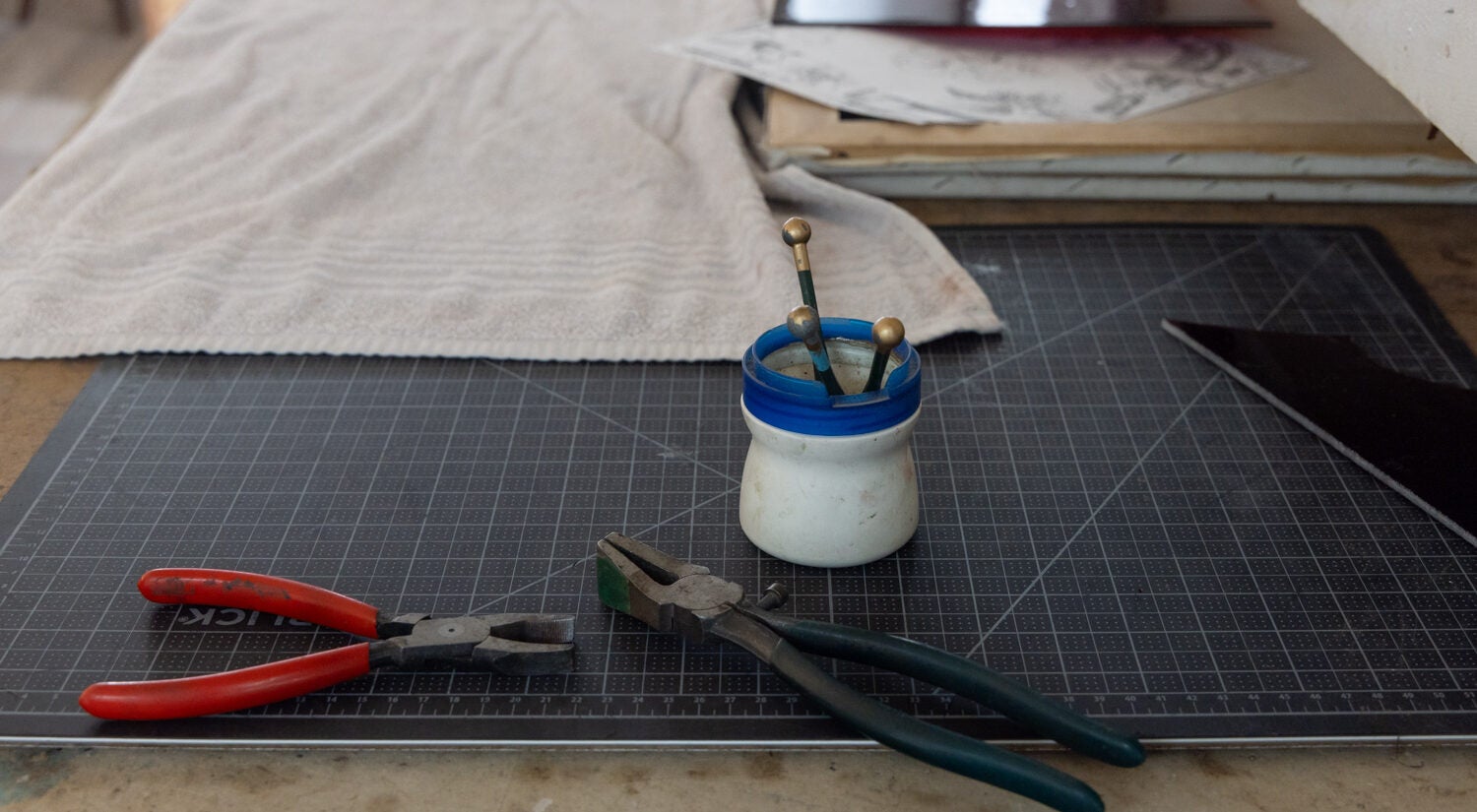
She often works with red or blue flash glass and eventually paints it with silver stain before firing it in a kiln. That process creates a yellow-tinged glass. When all three of these primary colors get mixed and layered together, they create vibrant hues of oranges, pinks, purples and greens.
These bright colors are featured in Schaechter’s stained-glass biophilic dome. A series of rectangular glass windows make up the sides of the structure and feature insects, rodents, plants and flora.
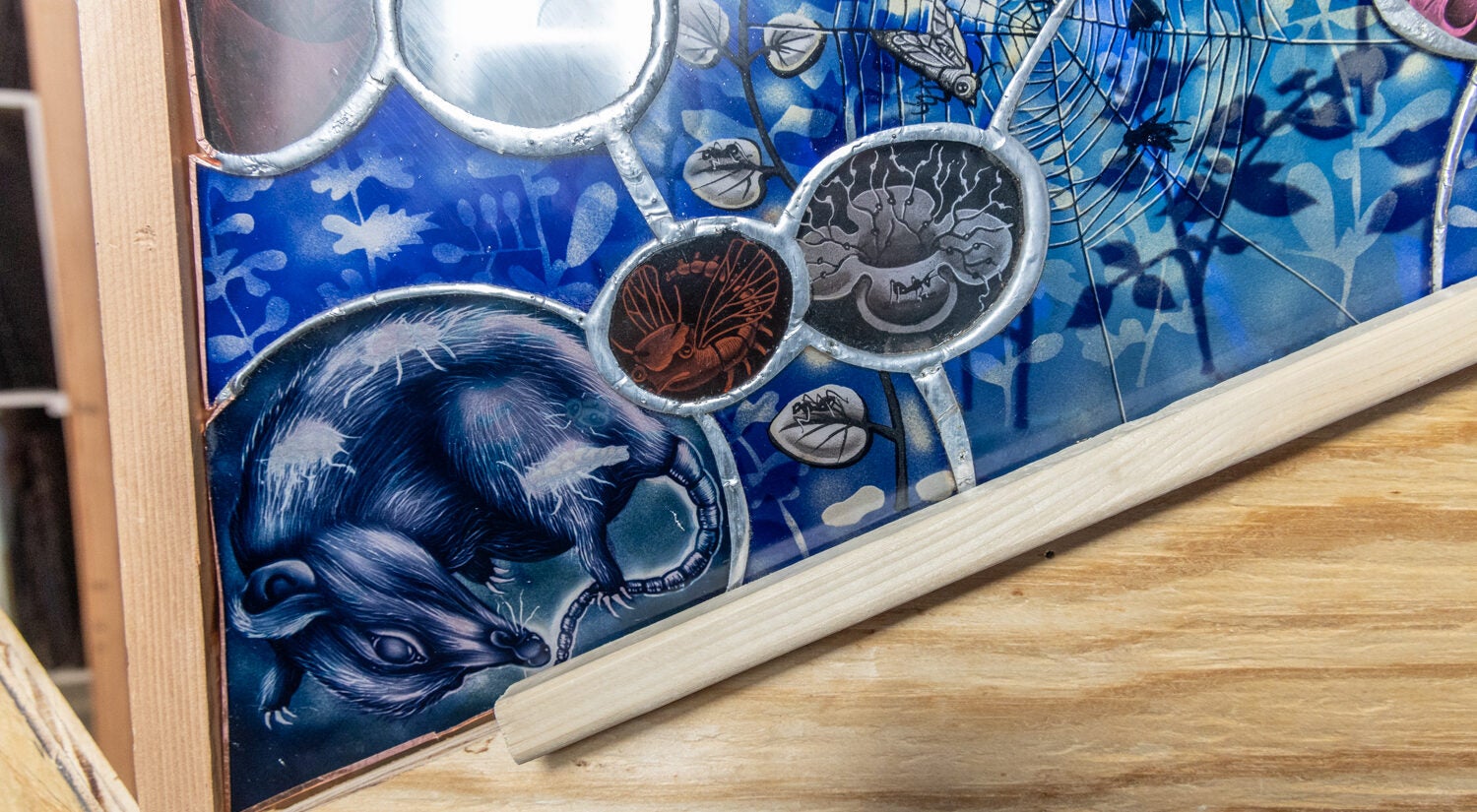
“Some of the bugs are realistic, like there are a lot of ants, and then there are beetles, they’re kind of realistic,” Schaechter said. “And then there’s these really wacky bugs that are completely crazy-looking.”
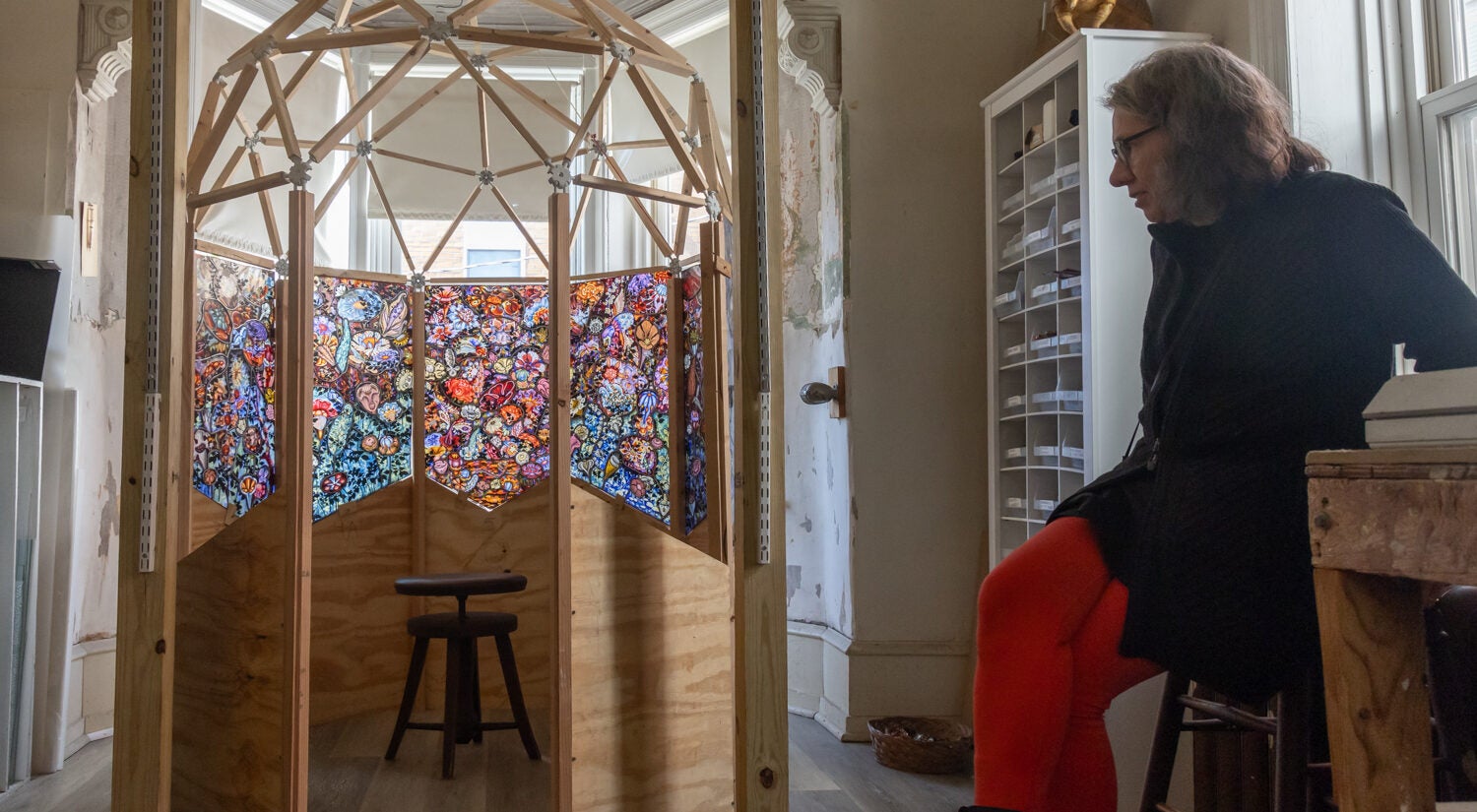
Over the years, Schaechter said she’s spent a lot of time thinking about the connection between art and nature, neurology, behavior and belief.
“As society is gradually secularized, religion and science almost become polar opposites, right? So, art’s sort of in the middle like, ‘What team am I going to play for?’” she said. “All three are attempts at understanding the human consciousness and the meaning of life.”
Schaechter said she used to be more skeptical about scientific investigations into the experience of art. How could you really put measurements on artistic creation, improvisation and spontaneity?
But now, Schaechter said she better understands what these neuroaesthetic researchers are all about.
“They’re just interested in how consciousness works and art is part of that,” she said. “By being neuroaestheticians, they’re not trying to make art themselves — that’s my job. They’re all really dedicated and they love art and they’re just curious about it.”
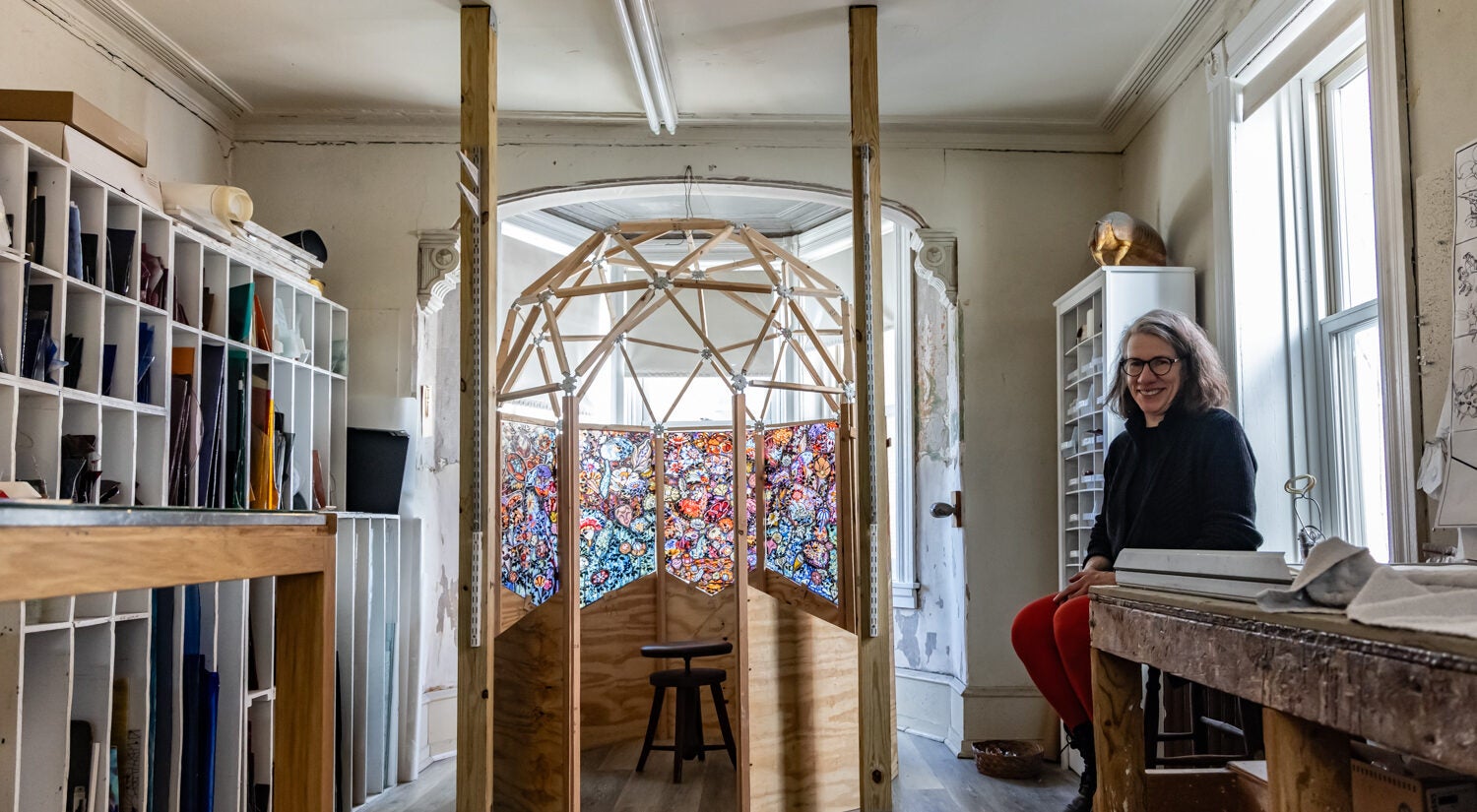
Schaechter’s stained-glass biophilic dome is scheduled to be on display at the Michener Art Museum in Doylestown in the spring of 2025.
When it’s completed, the top of the dome will be filled in with triangle panels of stained glass. A person inside the small space will be surrounded by nature as they look up at birds, the stars and the sky.
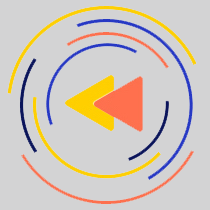
Saturdays just got more interesting.
WHYY is your source for fact-based, in-depth journalism and information. As a nonprofit organization, we rely on financial support from readers like you. Please give today.


